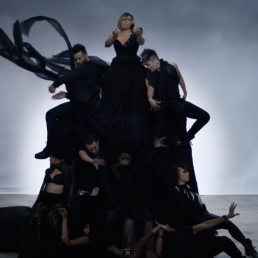What is Haute Couture
Definition
Haute couture (French for ‘high sewing’ or ‘high dressmaking’; IPA: [ˌoːt kuˈtyʁ]) refers to the creation of exclusive fashions. It is a common term for custom-fitted clothing as produced primarily in Paris but also in other fashion capitals such as New York, London, and Milan. Haute couture is not only made-to-order for a specific customer, it is usually made from high-quality, expensive fabric and sewn with extreme attention to detail and finish, often using time-consuming hand-executed techniques. The term is sometimes used to refer exclusively to French fashion; more often, it refers to any unique stylish design made to order for wealthy and high-status clients.
The term can refer to:
-The fashion houses or fashion designers that create exclusive and often trend-setting fashions.
-The fashions created.
Legal Status
The term haute couture is protected by law and according to the Chambre Syndicale de la Haute Couture based in Paris, France. Their rules state that “Only those companies mentioned on the list drawn up each year by a commission domiciled at the Ministry for Industry are entitled to avail themselves thereof”. The criteria to which a fashion house must adhere in order to be categorised haute couture were laid down in 1945 and updated in 1992.
These rules are simple, to be designated as haute couture a minimum of fifteen people must be employed at the workshops and must present to the press in Paris each season (spring/summer and autumn/winter) a collection of at least thirty-five runs consisting of models for daytime wear and evening wear.
However the term haute couture has been misused by successive ready to wear brands and high street labels since the late 1980’s so that its true meaning had become blurred with that of prêt-à-porter in the public perception.
The French term for ready-to-wear (not custom fitted) fashion is prêt-à-porter. Every haute couture house also markets prêt-à-porter collections, which typically deliver a higher return on investment than their custom clothing. In fact, much of the haute couture displayed at fashion shows today is rarely sold; it is created to enhance the good name of the house. Falling revenues have forced a few couture houses to abandon their less profitable couture division and concentrate solely on the less prestigious prêt-à-porter. These houses are no longer considered haute couture.
History
French leadership in European fashion may perhaps be dated from the 18th century, when the art, architecture, music, and fashions of the French court at Versailles were imitated across Europe. Visitors to Paris brought back clothing that was then copied by local dressmakers. Stylish women also ordered fashion dolls from Paris – dolls dressed in the latest Parisian fashions, to serve as models.
As railroads and steamships made European travel easier, it was increasingly common for wealthy women to travel to Paris to shop for clothing and accessories. French fitters and seamstresses were commonly thought to be the best in Europe, and real Parisian garments were considered better than local imitations.
The couturier Charles Frederick Worth (October 13, 1826 – March 10, 1895), is widely considered the father of haute couture as it is known today. Although born in Bourne, Lincolnshire, England, Worth made his mark in the French fashion industry. While he created one-of-a-kind designs to please some of his titled or wealthy customers, he is best known for preparing a portfolio of designs that were shown on live models at the House of Worth. Clients selected one model, specified colors and fabrics, and had a duplicate garment tailor-made in Worth’s workshop. Worth combined individual tailoring with a standardization more characteristic of the ready-to-wear clothing industry, which was also developing during this period.
Following in Worth’s footsteps were: Callot Soeurs, Patou, Poiret, Vionnet, Fortuny, Lanvin, Chanel, Mainbocher, Schiaparelli, Balenciaga, and Dior. Some of these fashion houses still exist today, under the leadership of modern designers.
In the 1960s a group of young designers who had trained under men like Dior and Balenciaga left these established couture houses and opened their own establishments. The most successful of these young men were Yves Saint Laurent, Pierre Cardin, André Courrèges, and Emanuel Ungaro. Japanese native and Paris-based Hanae Mori, a woman, was also successful in establishing her own line.
Lacroix is perhaps the most successful of the fashion houses to have been started in the last decade. Other new houses are Jean-Paul Gaultier and Thierry Mugler.
For all these fashion houses, custom clothing is no longer the main source of income, often costing much more than it earns through direct sales; it only adds the aura of fashion to their ventures in ready-to-wear clothing and related luxury products such as shoes and perfumes, and licensing ventures that make the real money. Excessive commercialization and profit-making can be damaging, however. Cardin, for example, licensed with abandon in the 1980s and his name lost most of its fashionable cachet when anyone could buy Cardin luggage at a discount store.
The 1960s also featured a revolt against established fashion standards by mods, rockers, and hippies, as well as an increasing internationalization of the fashion scene. Jet travel had spawned a jet set that partied — and shopped — just as happily in New York as in Paris. Rich women no longer felt that a Paris dress was necessarily better than one sewn elsewhere. While Paris is still pre-eminent in the fashion world, it is no longer the sole arbiter of fashion.



























